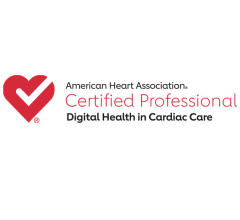
A panel discussion with some of the key opinion leaders at the recent SCCT 2020 virtual meeting. Note the questions on the left side of the screen, where attendees were able to interact with the speakers.
All medical conferences moved to a virtual meeting format due to COVID-19 this year, and there has been apprehension that virtual formats do not allow the same feeling and face-to-face collaboration. However, some medical societies are finding the format enables more international physician participation. This was the key takeaway by the leadership of the Society of Cardiovascular Computed Tomography (SCCT) at its 2020 virtual meeting in July.
The live sessions of the recent SCCT virtual meeting included more than 500 attendees. While not the same feel as being at an in-person meeting, SCCT said the virtual format enabled many more clinicians than normal from outside the U.S. to attend this year.
"Virtual meetings can have more reach to people globally, and we saw more people from around the world attending this year's meeting than we have ever had in our 15 year history," said Ron Blankstein, M.D., MSCCT, director of cardiac computed tomography, Brigham and Women's Hospital and immediate past president of SCCT. "I think the future of meetings will be virtual meetings, at least for the time being, and possibly much longer. Virtual meetings are not exactly what we are used to, but we need to recognize that."
Blankstein said it is not surprising that clinicians from overseas can attend the meeting because they do not have to spend money on travel. "Anyone from around the world can now attend this meeting such as this, and we definitely noted that when we look at out registration numbers," he explained.
Other cardiology conferences that were forced to go virtual due to the pandemic found a similar trend in greatly increased international participation. This included included the American College of Cardiology (ACC), the Society of Cardiovascular Angiography and Interventions (SCAI), Heart Rhythm Society (HRS), and Transcatheter Valve Technologies (TVT).
The Cardiovascular Research Foundation (CRF) that runs TVT decided to leverage that information to target more international participation for its upcoming Transcatheter Cardiovascular Therapeutics (TCT) virtual meeting Oct. 14-18.
"These digital formats are allowing us to reach people who we otherwise were not able to reach with in-person meetings," explained Juan F. Granada, M.D., CRF president and CEO. "At an in-person meeting you are limited by multiple factors. One of those are the financial ability of someone to actually be able to go to the meeting. So it is interesting to see that this virtual platform allows us to reach way more people than we were able to before."
He said planning for these types of meetings does require organizers to be "super targeted" on content delivered and they need to think about the various time zones of the attendees to help accomodate their participation in the live sessions.
"The delivery of content is actually way more efficient," Granada explained. "I don't think this is going to replace the in-person meetings, because the feel and approach is different, but for sure this platform has allowed the delivery of information to be much more effective."
The virtual HRS meeting in May found similar high engagement from electrophysiologists from outside the United States.
"There was a high level of engagement, and it actually enabled people to participate who would not necessarily have attended, so this appears to add value to the global community," explained Andrew D. Krahn, M.D., FHRS, head of the division of cardiology at St. Paul’s Hospital, professor of medicine at the University of British Columbia and vice president of the Heart Rhythm Society (HRS). "So we found the virtual platform is not just a workaround, its actually a meaningful learning platform and we should be exploring new ways to use this."
He said the virtual meeting was able to reach new audiences. Krahn used the example of China, which has a large number of electrophysiologists, but they make up a tiny fraction of the usual in-person attendees, However, with this virtual meeting, the Chinese now have the potential to attend the meeting in much larger numbers.
"The platform gives viewers a chance to hit pause, look at the slides, make notes, and we have gotten feedback that actually suggests this might be better that the in-person meetings," Krahn said. "It also allows you to attend all the sessions and not pick and choose like you have to at a live meeting because there is something else going on at the same time. The silver lining in this is that different types of learning help different people in ways that we might not necessarily have intended. This has been a good experiment in disrupting our thinking on different ways of doing things."
VIDEO: Insights Into How HRS Organized its Virtual Meeting — a discussion with Andrew D. Krahn, M.D. on lessons learned from the 2020 Heart Rhythm Society (HRS) virtual meeting.
VIDEO: What to Expect at the Virtual TCT 2020 Meeting — Interview with Juan F. Granada, M.D.


 November 14, 2025
November 14, 2025 









